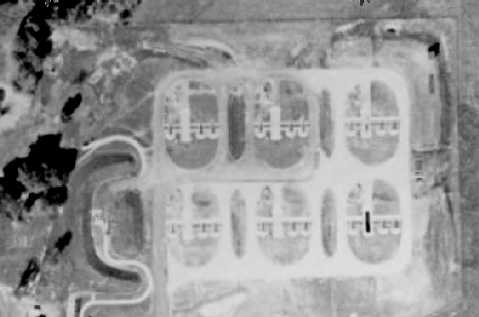
Abandoned & Little-Known Airfields:
Maryland, Southwestern Baltimore area
© 2002, © 2015 by Paul Freeman. Revised 10/16/15.
This site covers airfields in all 50 states: Click here for the site's main menu.
____________________________________________________
Please consider a financial contribution to support the continued growth & operation of this site.
Granite Nike Missile Battery BA-79 Launch Site (revised 10/16/15) - Granite Nike Missile Battery BA-79 Integrated Fire Control Area (revised 10/16/15)
____________________________________________________
Granite Nike Missile Battery BA-79 Launch Site, Granite, MD
39.37 North / 76.85 West (West of Baltimore, MD)

The earliest depiction which has been located of the Granite Nike Launch Site was a 1957 aerial view,
showing the 6 sets of quadruple launchers for the 1st-generation Nike Ajax missile.
The purpose of this military base was to shoot down incoming aircraft.
It is included here due to its significance in Cold War history,
its remarkable state of preservation,
and the fact that it is located only 4 miles from the childhood home of the author of this web site.
Most residents of the Baltimore suburbs were probably unaware of the presence
of nuclear-armed missiles that were kept at the ready in their underground magazines in Granite,
just a few miles from the outer suburbs.
"It was known that there were missiles there," says Joe Tatarewicz, a Granite resident.
"People would see them raised into launch position during drills.
What was not known was that they had nuclear warheads.
Folks here were pretty surprised."
Site BA-79 was one of a network of 7 Nike missile batteries that surrounded Baltimore.
The others were located in Phoenix (North of Baltimore), Fork (Northeast), Edgewood (Northeast),
Tolchester (Southeast), Jacobsville (Southeast), and Cronhardt (Northwest).
Site BA-79 also served as the Battalion Headquarters for all of the Baltimore-area Nike units.
Each Nike battery consisted of 2 separate facilities:
a Launch Area & an Integrated Fire Control Area.
The layout of all Nike sites was characteristic in that the launch site
was situated 1-3 miles “downrange” from its Integrated Fire Control Area,
along the axis toward the anticipated targets,
such that the radars at the IFCA would have a line-of-sight toward both the missiles & the target.
The Nike batteries replaced 90mm anti-aircraft artillery units which had been deployed
to locations surrounding Baltimore (and other major American cities) in 1952.
Granite Site BA-79 was activated in 1954,
and was initially armed with the 1st-generation Nike Ajax missile.
The Nike Ajax missile was very large: each one stood 34 feet tall & weighed 2,400 pounds.
It had a range of 25 miles & a maximum speed of Mach 2.3.
The earliest depiction which has been located of the Granite Nike Launch Site was a 1957 aerial view,
showing the 6 sets of quadruple launchers for the 1st-generation Nike Ajax missile.
A circa 1950s aerial view looking northeast at the Granite Nike Launch Site showing a total of 15 Nike Ajax missiles elevated on their launchers.
In 1959, Granite Site BA-79 was among four of the Baltimore area batteries that were converted
to fire the 2nd-generation Nike Hercules missile.
It was chosen for conversion to the Nike Hercules version as Granite was a "double site",
with 6 underground magazines (each with 4 missile launchers),
instead of the usual complement of 3 magazines.
A circa 1960s view of a Nike Hercules missile on its launcher at the Granite site.
The Nike Hercules missile was considerably larger & more powerful than the earlier Nike Ajax version.
It was a truly fearsome weapon: each missile was 41 feet tall, weighed 10,700 pounds,
had a range of 87 miles, and carried either a nuclear or conventional warhead.
The deployment of the nuclear-armed Nike Hercules missiles among the hundreds of sites
throughout the US probably constituted the most widespread deployment
of nuclear weapons in US history.
Operation of the Granite Nike site was taken over by the MD Army National Guard in 1963.
A 1964 aerial view showed the Granite Nike Launch Site after it had been converted to the Nike Hercules configuration,
but only 13 launchers appeared to be mounted over the concrete base
(out of a total of 24 which could be supported by the 4x6 configuration).
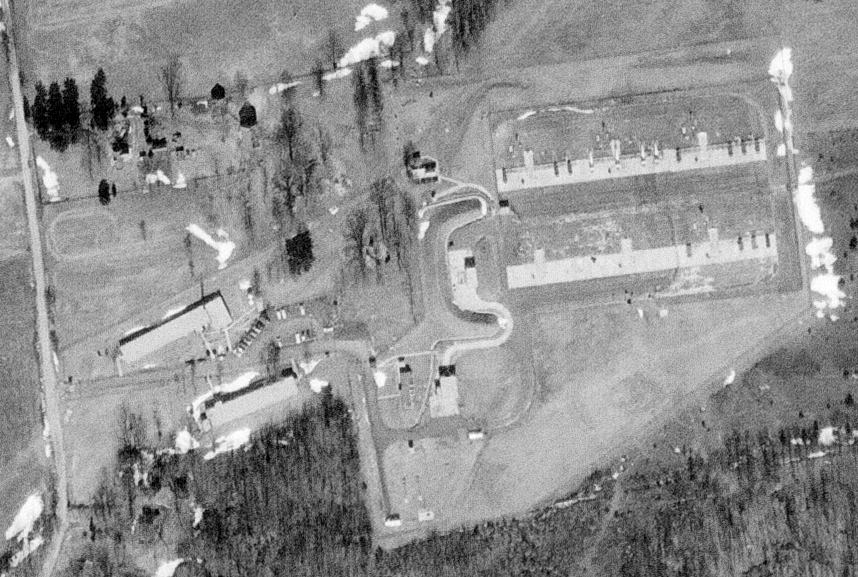
The 2/21/66 USGS aerial photo appeared to show 4 Nike Hercules missiles mounted on their launchers at Granite.
The 1967 USGS topo map depicted 2 buildings at the launch site, but did not label the installation.
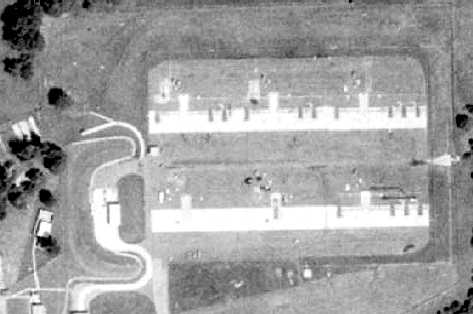
The last photo which has been located showing the Granite Nike Launch Site in operation was a 1971 aerial photo.
Similarly to the 1964 photo, it appeared to show a partial complement of launchers
(only 15, out of a total of 24 which could be supported by the 4x6 configuration).
With the reductions in US air defense forces, Granite Site BA-79 was deactivated in 1974.
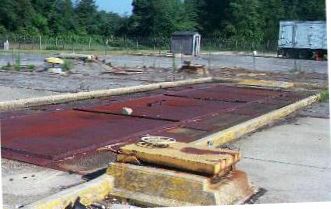
A circa 1998-2000 photo of a missile magazine hatch at the Granite site.
Aerial view of the Granite Nike Launch Site by Paul Freeman,
taken 2001 from a Diamond Katana DA20-C1.
The foundations of the 24 Nike Hercules missile launchers are in the foreground,
looking almost completely undisturbed, in a remarkable state of preservation.
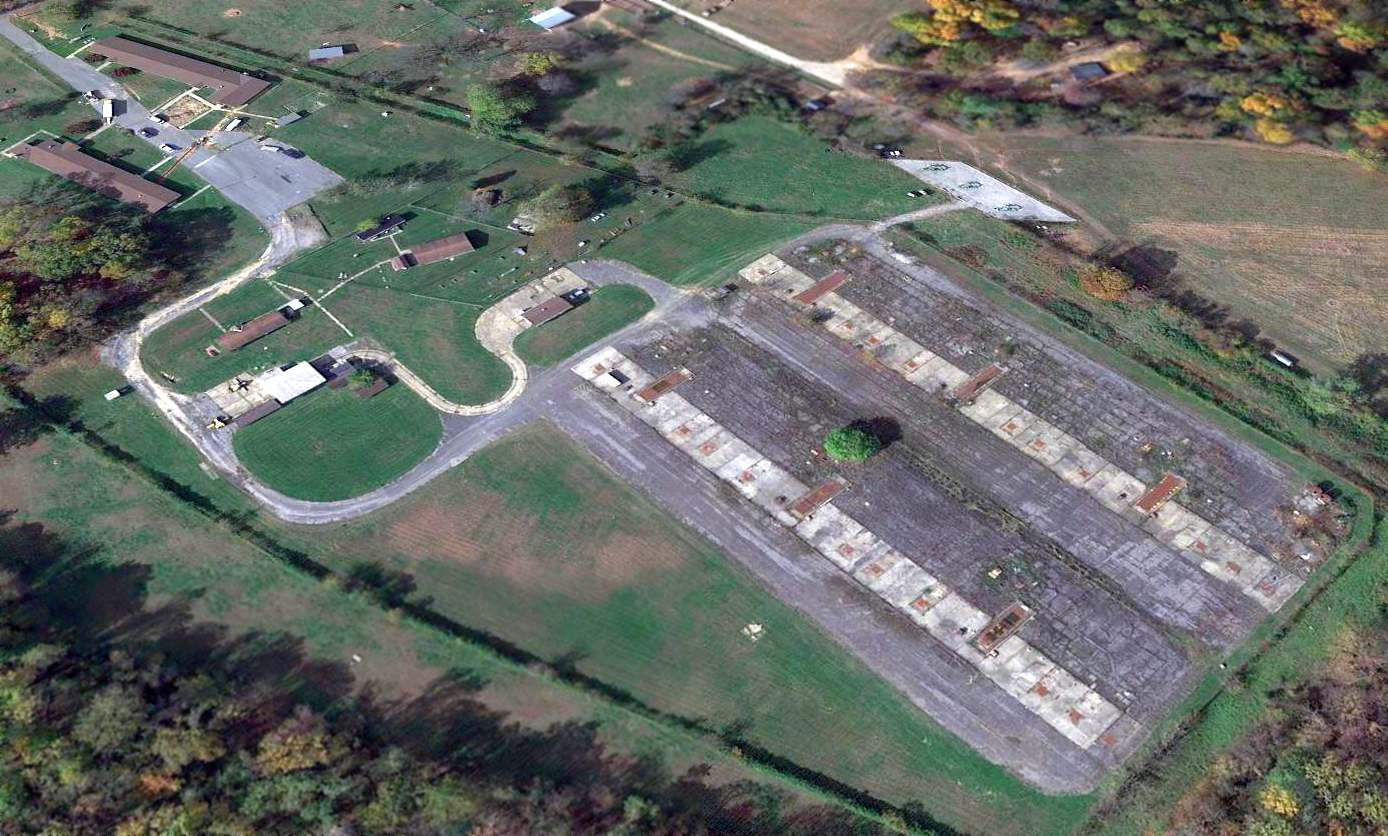
A 2014 aerial view looking northwest showed the Granite Nike Launch Site shows it to remain in a remarkable state of preservation.
What a shame that this remarkable remnant of the Cold War, a surface-to-air missile site so close to a major metro area, sits without any acknowledgement.
The Granite battery's companion Integrated Fire Control Site is located just a little further south along Hernwood Road.
For additional description of another Baltimore-Washington area Nike site,
see the Herndon Site W-83 in the Virginia page.
See also:
http://www.mde.state.md.us/environment/was/brownfields/factsheets/BC/granite.html
http://www.nikenuke.net/nike/text/nikefrm1.html
http://www.jps.net/ethelen/loc-v.html#Virginia
____________________________________________________
Granite Nike Missile Battery BA-79 Integrated Fire Control Area, Granite, MD
39.35 North / 76.86 West (West of Baltimore, MD)
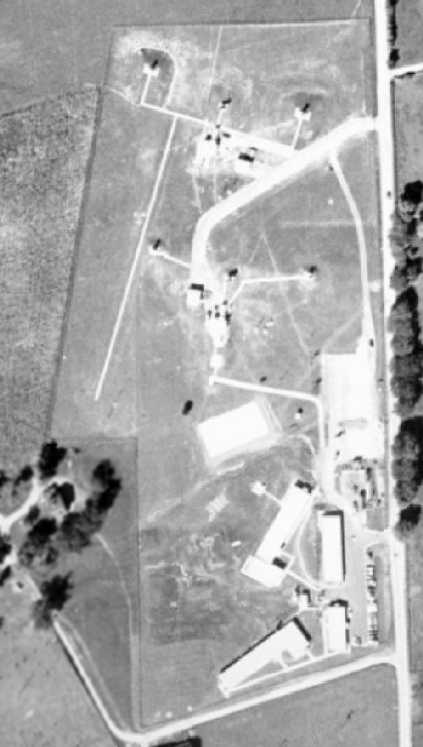
The earliest depiction which has been located of the Granite Nike Integrated Fire Control Area was a 1957 aerial view,
showing the numerous radar towers on the site.
The Granite Nike Integrated Fire Control Area was the companion site to the Granite Launch Site,
located just a little further along Hernwood Road.
Granite Site BA-79 was activated in 1954,
and was initially armed with the first-generation Nike Ajax missile.
It encompassed 17 acres on the west side of Hernwood Road, just north of Old Court Road.
The earliest depiction which has been located of the Granite Nike Integrated Fire Control Area was a 1957 aerial view,
showing the numerous radar towers on the site.
In 1959, Granite Site BA-79 was among 4 of the Baltimore area batteries that were converted
to fire the 2nd-generation Nike Hercules missile.
Operation of the Granite Nike site was taken over by the MD Army National Guard in 1963.
A 1964 aerial view showed the changes that had been made to the Granite Nike Integrated Fire Control Area
after it had been converted to the Nike Hercules configuration,
with the northern set of radar towers having been removed,
and a much larger set of 5 radar towers having replaced those previously located in the center of the facility.
The 1967 USGS topo map depicted 2 buildings at the Fire Control site, but did not label the installation.
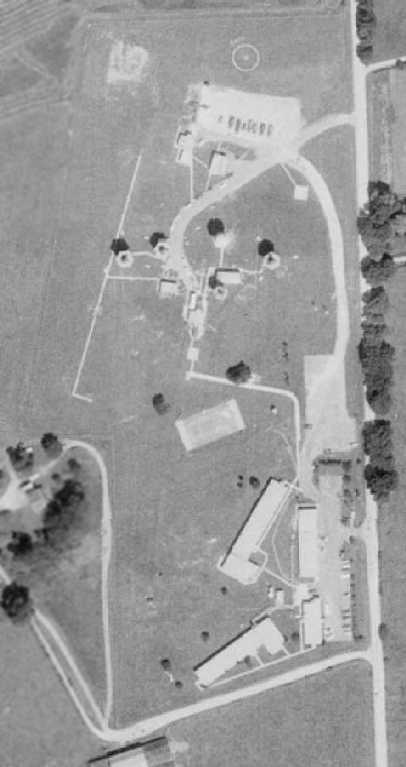
The last photo which has been located showing the Granite Nike Integrated Fire Control Area in operation was a 1971 aerial photo,
showing the 5 large radar towers in the center of the base which supported Nike Hercules operations.
With the reductions in US air defense forces, Granite Site BA-79 was deactivated in 1974.
From 1974-92, the Granite Control Site was used by the MD Army National Guard
to house the 70th General Supply Company & the 29th Support Center Rear Area Operations.
In 1992, the site was once again inactivated,
but the property was retained under Army ownership.
Aerial view of the Granite Nike Integrated Fire Control Site by Paul Freeman,
taken 2001 from a Diamond Katana DA20-C1.
The 5 remaining radar towers are in the top right of the clearing.
A pair of circa 1990s / early 2000s photos of the remains of the radar towers at the Granite Integrated Fire Control Site.

A 2002 panoramic shot by Mike Legeros of the Granite Integrated Fire Control Site,
with the guard shack on the left, radar towers on the right.
Out of all the Baltimore Nike sites,
the Granite Integrated Fire Control Area was the one that remained in the best condition (up through the 1990s).
The primary remaining features which denoted the site as a Nike installation
were the 7 radar towers which remained standing.
These towers once mounted the High-Power Acquisition Radar (HIPAR) & Missile Tracking Radar.
The radomes had long since been removed from the towers.
Army officials from Fort Meade had plans in 2001 to remove all buildings & towers from the Granite Control Area,
taking the site down to vegetation.
Indeed, the radar towers of the Granite base were removed,
as Allen Larsen reported in 2004, "The Granite radar base is no more."
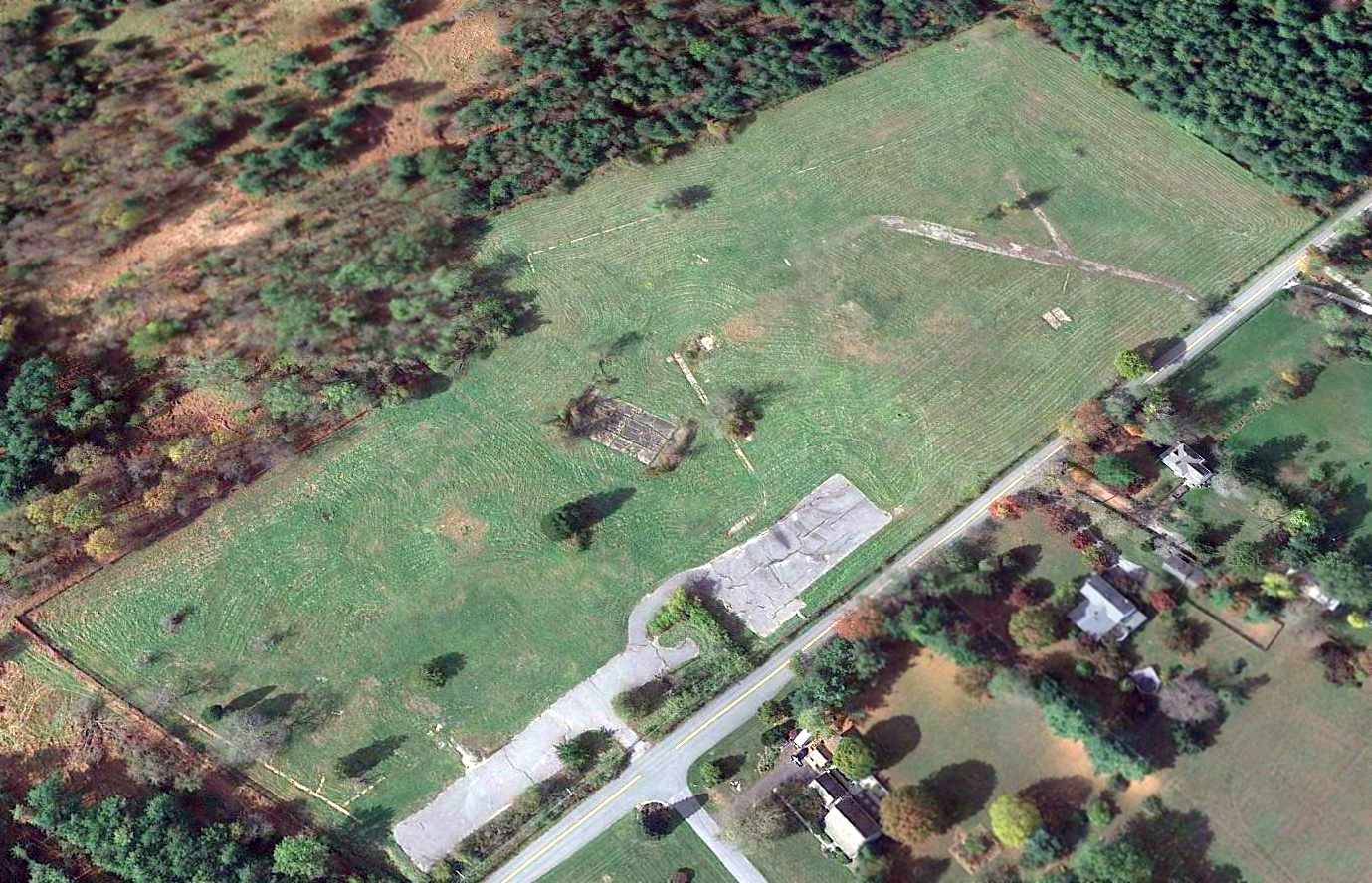
A 2014 aerial view looking northwest showed the Granite Nike Integrated Fire Control Area had been scraped clean, with all structures removed.
The only remains are the paved lots & roads, and the overall property outline.
For additional description of another Baltimore-Washington area Nike site,
see the Herndon Site W-83 in the Virginia page.
See also:
http://www.mde.state.md.us/environment/was/brownfields/factsheets/BC/granite.html
http://www.nikenuke.net/nike/text/nikefrm1.html
http://www.jps.net/ethelen/loc-v.html#Virginia
____________________________________________________
Since this site was first put on the web in 1999, its popularity has grown tremendously.
That has caused it to often exceed bandwidth limitations
set by the company which I pay to host it on the web.
If the total quantity of material on this site is to continue to grow,
it will require ever-increasing funding to pay its expenses.
Therefore, I request financial contributions from site visitors,
to help defray the increasing costs of the site
and ensure that it continues to be available & to grow.
What would you pay for a good aviation magazine, or a good aviation book?
Please consider a donation of an equivalent amount, at the least.
This site is not supported by commercial advertising –
it is purely supported by donations.
If you enjoy the site, and would like to make a financial contribution,
you
may use a credit card via
![]() ,
using one of 2 methods:
,
using one of 2 methods:
To make a one-time donation of an amount of your choice:
Or you can sign up for a $10 monthly subscription to help support the site on an ongoing basis:
Or if you prefer to contact me directly concerning a contribution (for a mailing address to send a check),
please contact me at: paulandterryfreeman@gmail.com
If you enjoy this web site, please support it with a financial contribution.
please contact me at: paulandterryfreeman@gmail.com
If you enjoy this web site, please support it with a financial contribution.
____________________________________________________
This site covers airfields in all 50 states.
For the site's main menu: Home